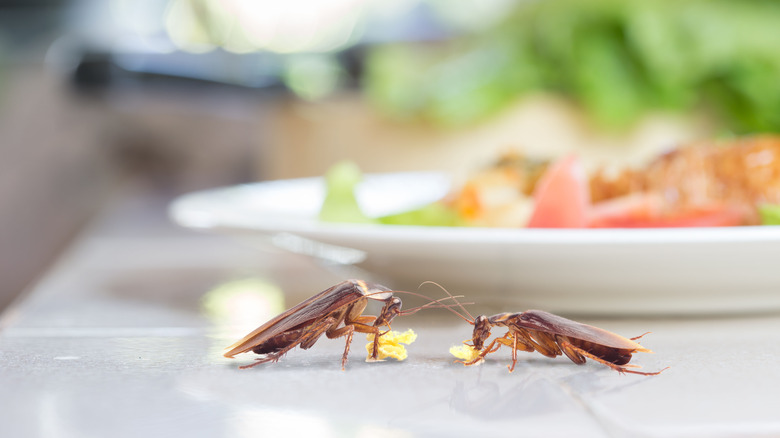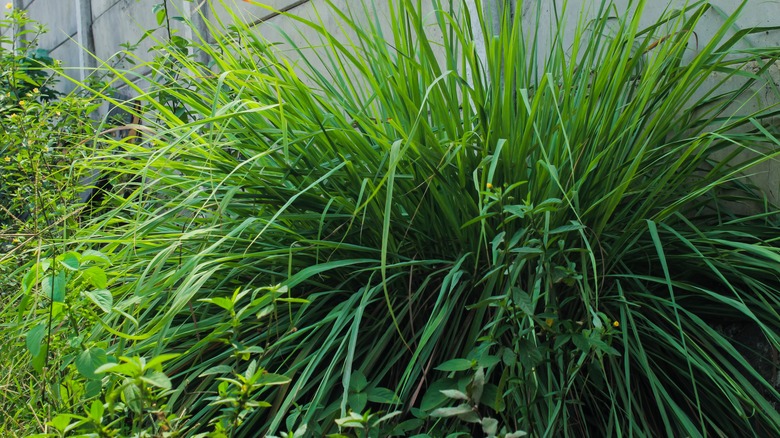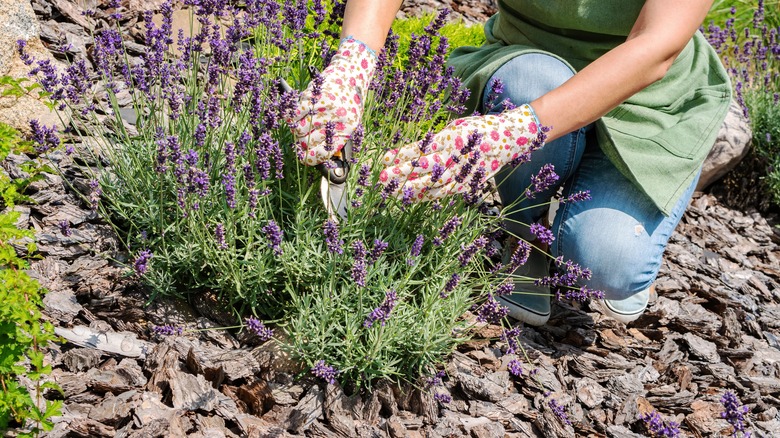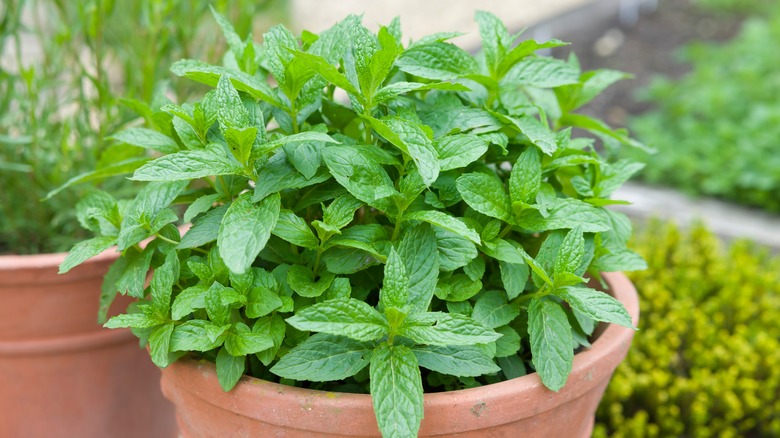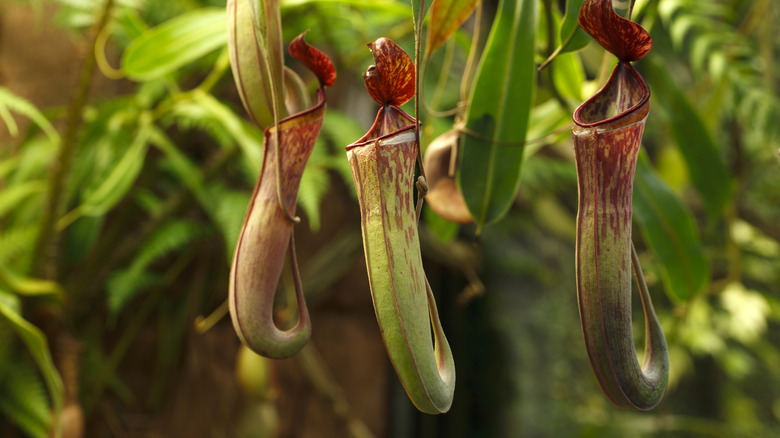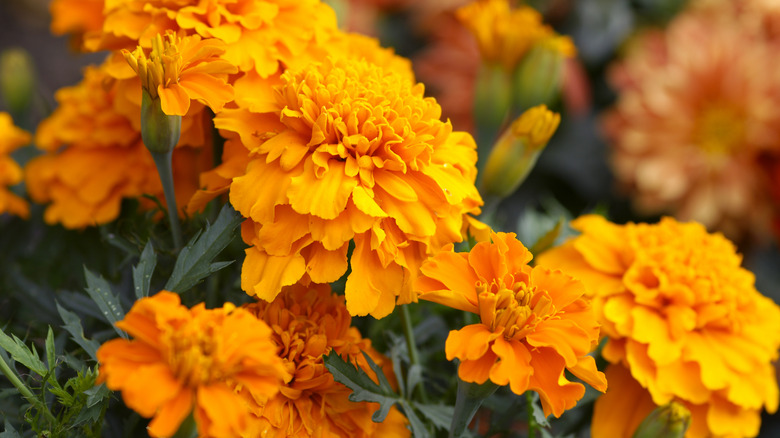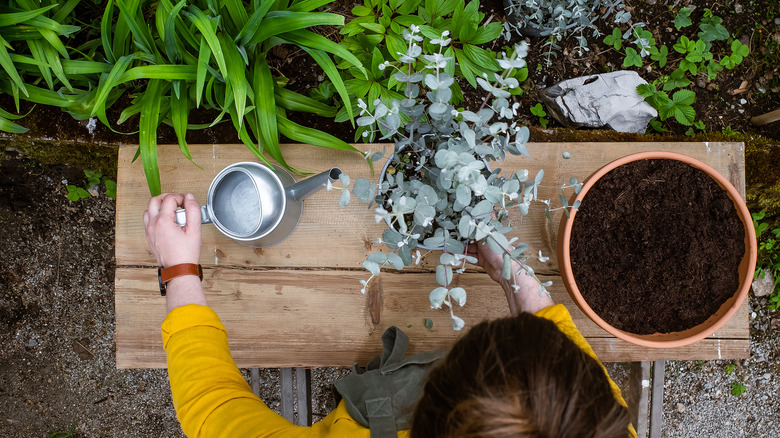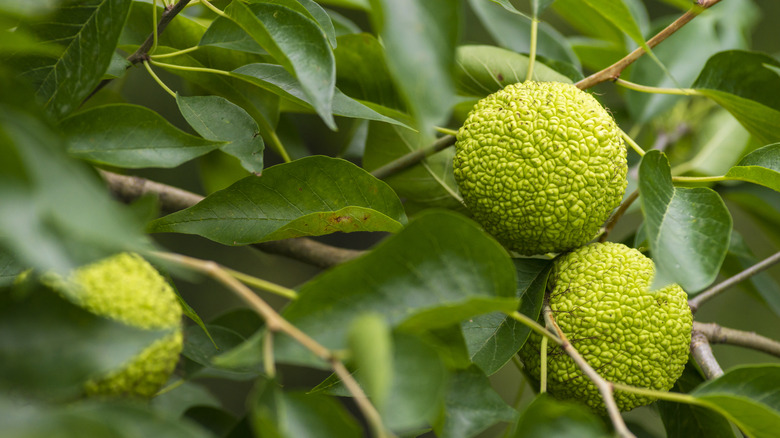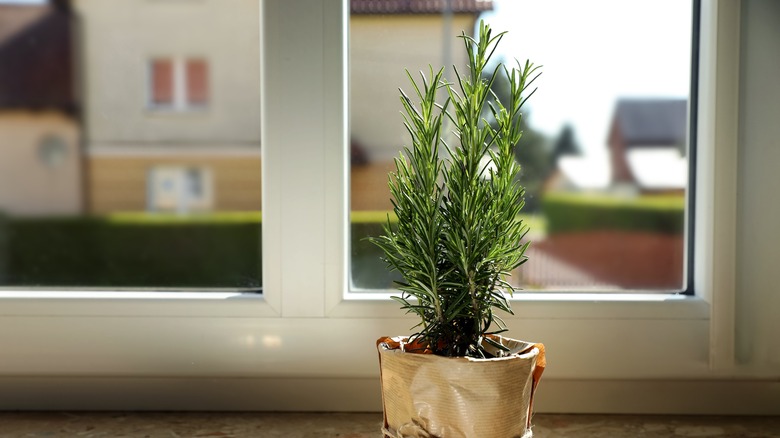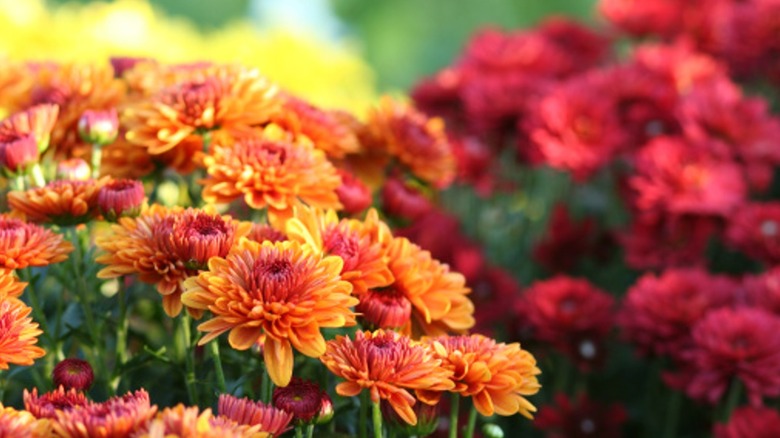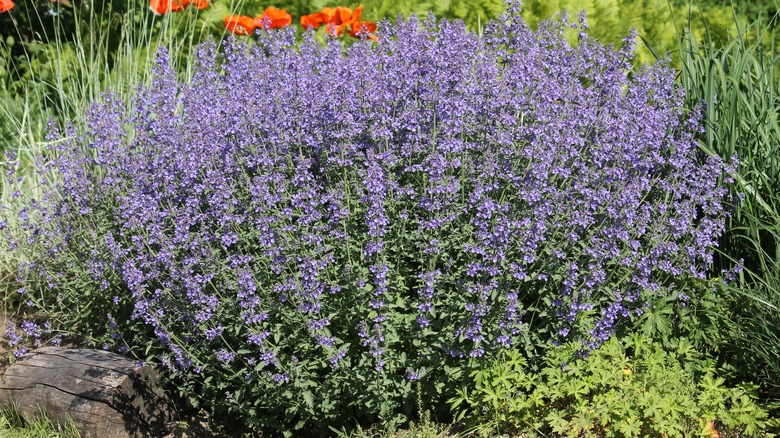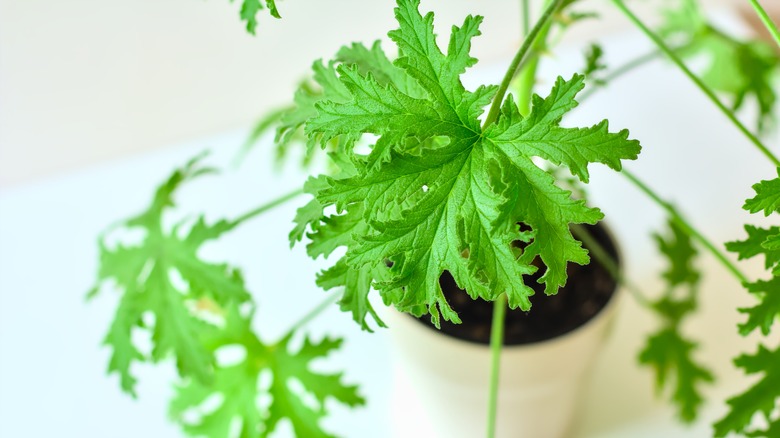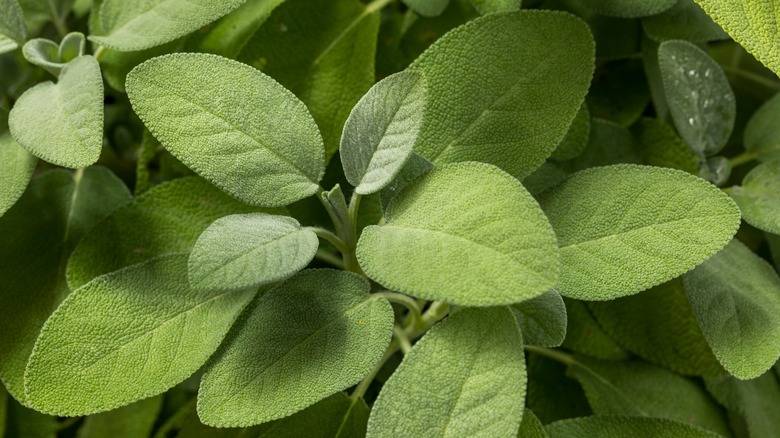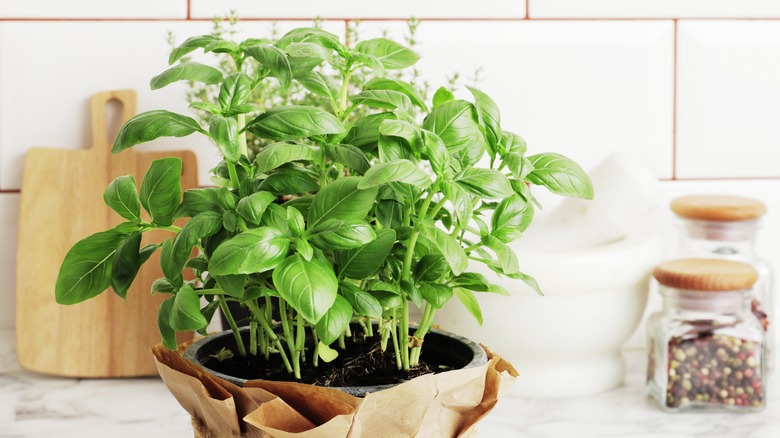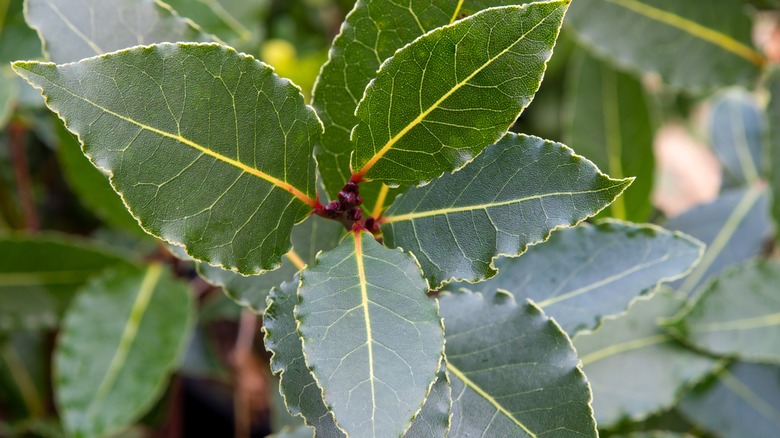14 Indoor And Outdoor Plants That Roaches Cannot Stand From House Digest's Master Gardener
Once roaches take over your home, there's not much you can do besides call an exterminator. While this is typically the only option, the harsh pesticides required to eliminate these nasty pests are often considered unsafe for small children and pets. Of course, since roaches carry around dangerous pathogens, which they then deposit around your home, including salmonella, streptococcus, and other diseases, their presence in the house is also not an option. The best way to deal with roaches is to prevent them from nesting in your home. One way to do that is to keep fragrant plants around that repel them. Outdoor plants will keep roaches from entering your home through cracks in your foundation or around windows and doors, and indoor greenery will encourage them to scurry away in favor of a more inviting environment.
In addition to adding certain types of greenery to your home, there are a few steps you can take to help keep roaches away. These insects thrive in a space with ample sources of food. By keeping sinks, countertops, trash cans, and food storage areas clean, you can deprive roaches of easy access to food. Outdoors, keep wood piles, compost bins, and other areas with rotting organic materials away from your home. This will lead them away from your house. While you're working to repel repugnant roaches from your home, consider adding some of these plants that make beautiful additions to your indoor and outdoor spaces while offering scents that repel roaches.
Lemongrass
Lemongrass (Cymbopogon citratus) is a perennial in areas that do not experience a frost, but it also grows quickly as an annual in regions that do. This lovely plant is grown as an ornamental and aromatic plant harvested for its roots, which are used to add lemon flavor to many dishes. Although lemongrass is generally considered an outdoor plant, you can harvest a few root sections before the first frost. Place them in a planter with good drainage and high-quality potting soil to overwinter them indoors in a sunny window.
Lavender
There are many reasons to grow lavender (Lavandula angustifolia), and you can add repelling roaches to that list. While this plant is known to be relaxing to humans, it also offers antimicrobial properties. And guess what roaches love... microbes! By inhibiting the growth of microbes, lavender naturally repels those creepy crawlers. Most species of this lovely plant are hardy in USDA hardiness zones 5 to 9. Lavender grows fairly quickly as an annual, but you can also grow it in a container — leaving it outdoors when it's warm and bringing it inside when the temperatures get too cold.
Mint
Even those who believe they have a black thumb can grow mint (Mentha spp). This quickly spreading perennial is hardy to USDA zone 3, so it will grow almost anywhere in the United States. The only real problem with this plant is that it is almost too easy to grow. When planted in the ground, it can quickly take over your garden or flower bed, so we recommend keeping your mint plants confined to a container. Luckily, this bright-smelling herb grows well in direct sun or partial shade and is not fussy about soil conditions.
Pitcher plant
As the only carnivorous plant on this list, the pitcher plant (Nepenthes gracilis) literally eats roaches and other insects that fall prey to the irresistible nectar within. Indoors or out, roaches are attracted to that sweet, sweet smell, climb over the edge of the bloom, and fall in. The steep, slippery sides of these "pitchers" prevent pests from crawling out, while the nectar keeps insects with wings from flying away. While some pitcher plants are hardy to USDA gardening zone 7, most are grown as houseplants. Their ability to attract pests makes them perfect for the kitchen.
Marigold
Marigolds (Tagetes patula) are a gorgeous and popular garden annual known for repelling bad bugs. These plants have a distinctively pungent scent, and it's probably not one you'll want to keep inside. However, marigolds are perfect for planting around the exterior of your home in landscaping beds or vegetable gardens. Although they are easy to grow from seed, you can usually find six-packs of plants super cheap at garden centers and plant nurseries in the late spring. Marigolds thrive in full sun, are drought-tolerant, and have no special soil requirements.
Eucalyptus
For many of us, the scent of eucalyptus (Eucalyptus spp.) is engrained in our brains as a scent that helps us breathe more freely. This pleasantly astringent scent is used in showers and medications to help open airways, but that same strong scent can help repel roaches. Eucalyptus is only hardy to USDA zone 7, so most people grow it outdoors as an annual or indoor houseplant. If you have pets, you might want to skip this plant or make sure you place it where dogs and cats cannot access the toxic fresh or dried leaves.
Osage Orange
Also known as a hedge apple, the Osage orange (Maclura pomifera) is native to the central region of the US. These thorny trees produce oddly shaped fruits that are not for eating and are believed to repel a host of insects. This is not a tree you'll want near your home, so if you decide to add this attractive tree to your landscape, place it somewhere the fallen fruits will not be a problem.
Rosemary
Like the other herbs on this list, rosemary (Salvia rosmarinus) is a multipurpose plant. This woody herb grows best in warm climates and is only hardy up to USDA zone 6b, depending on the variety. Like lavender, rosemary grows well in planters that you can bring in over the winter — if you do not want to grow it as an annual in cooler regions. Keep a small plant indoors in a sunny spot, or keep cuttings drying around the kitchen to repel roaches.
Chrysanthemums
Chrysanthemums, belonging to the genus of the same name, are also known simply as "mums." They have a pungent odor similar to marigolds. Although many people buy these plants as annual additions to fall outdoor decor, chrysanthemums are hardy to zone 5, so you can plant them in the ground after their blooms fade. These perennials will die back to the ground, but in the spring, they will return from the roots to keep pesky roaches at bay.
Catnip
Catnip (Nepeta cataria) is a perennial herb that is not just for cats. While many people grow this mint relative to dry for their kitties to enjoy, it also makes a calming tea for humans. Even if you don't have cats, catnip is an attractive addition to gardens with strong vertical stems that produce tiny blooms beloved by bees and other beneficial insects. This herb can be grown throughout the United States in hardiness zones 3 through 9.
Citronella
We know citronella is used to repel mosquitoes, but this beautiful annual can also repel other pests, including roaches. The distinctive scent of this plant makes it perfect for planters on patios or anywhere you spend time outside. A few citronella plants (Cymbopogon nardus) flanking your exterior doors can help keep pests out while putting on a gorgeous display of blooms. This plant does not tolerate frost, so it is an annual in all but the warmest regions of the US.
Sage
Sage (Salvia officinalis) rounds out our trifecta of strongly scented woody herbs that also include lavender and rosemary. Herb gardens in areas in which these plants are hardy can become beautiful, functional, and aromatic by placing all these gorgeous plants together near the foundation, keeping roaches from entering via cracks around crawlspaces. Even if you live in a climate where lavender and rosemary are not hardy, you can grow sage as a perennial since some varieties are hardy to USDA zone 4.
Basil
If you're looking for an herb that you can indoors year-round, basil (Ocimum basilicum) might be your best bet. This annual herb offers many culinary uses, so while you're growing basil indoors to repel roaches, you can pinch off a leaf here and there to add flavor to your food. You'll need a bright, sunny window to grow basil inside, but it also grows well outdoors in containers or in the ground. Like most herbs, this plant is not fussy about soil conditions.
Bay
Bay (Laurus nobilis) grows as a shrub or small tree hardy to USDA growing zones 8 to 11. These plants make beautiful additions to landscapes or planters because they are easy to prune into attractive shapes, making them both ornamental and useful. If you live in an area that experiences freezing temperatures, you can grow bay in a planter and bring it indoors when the temperatures drop to benefit from its stiff, scented leaves.
